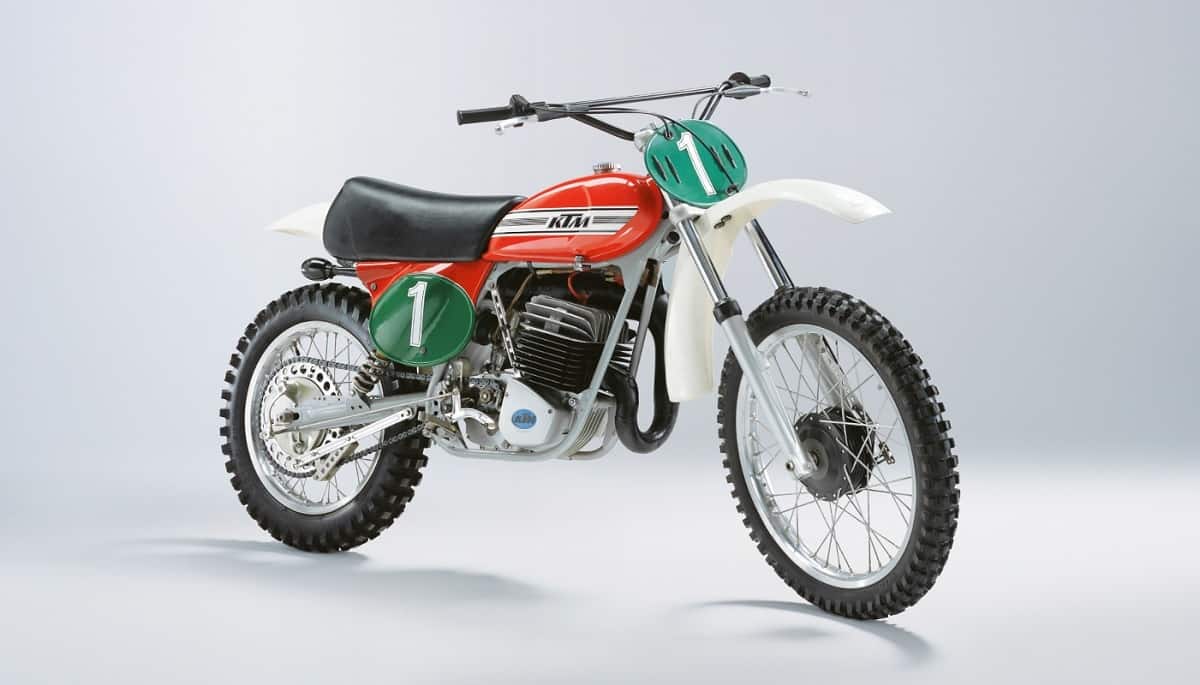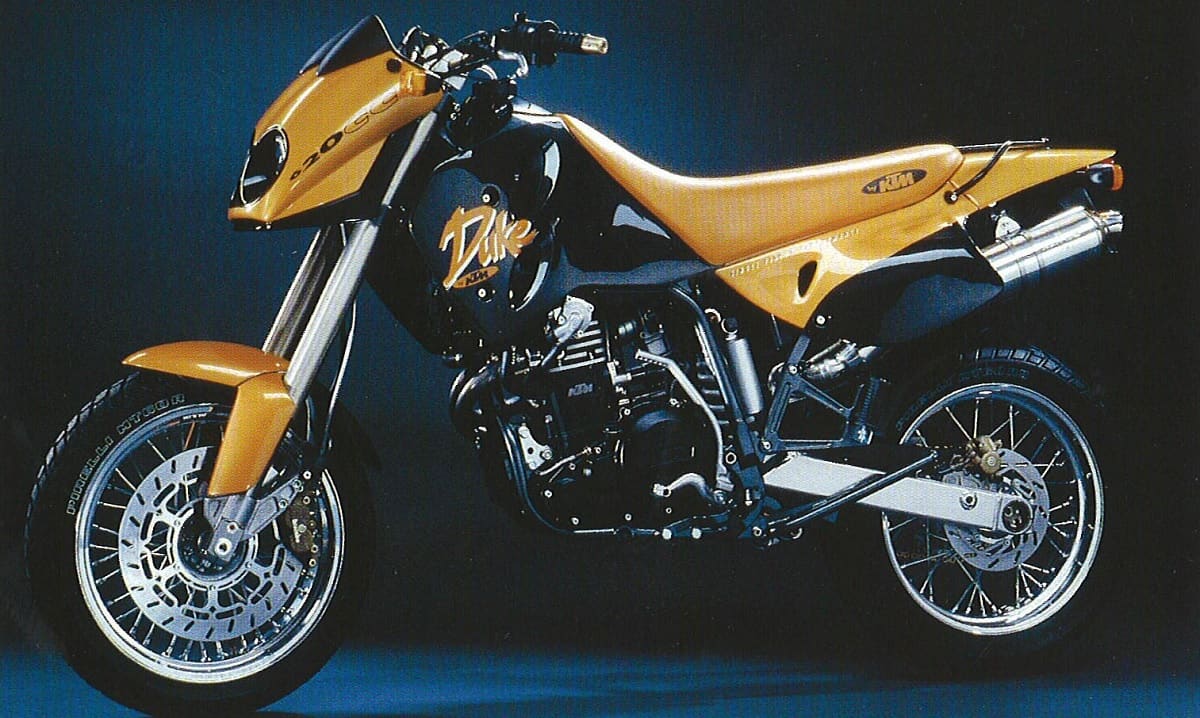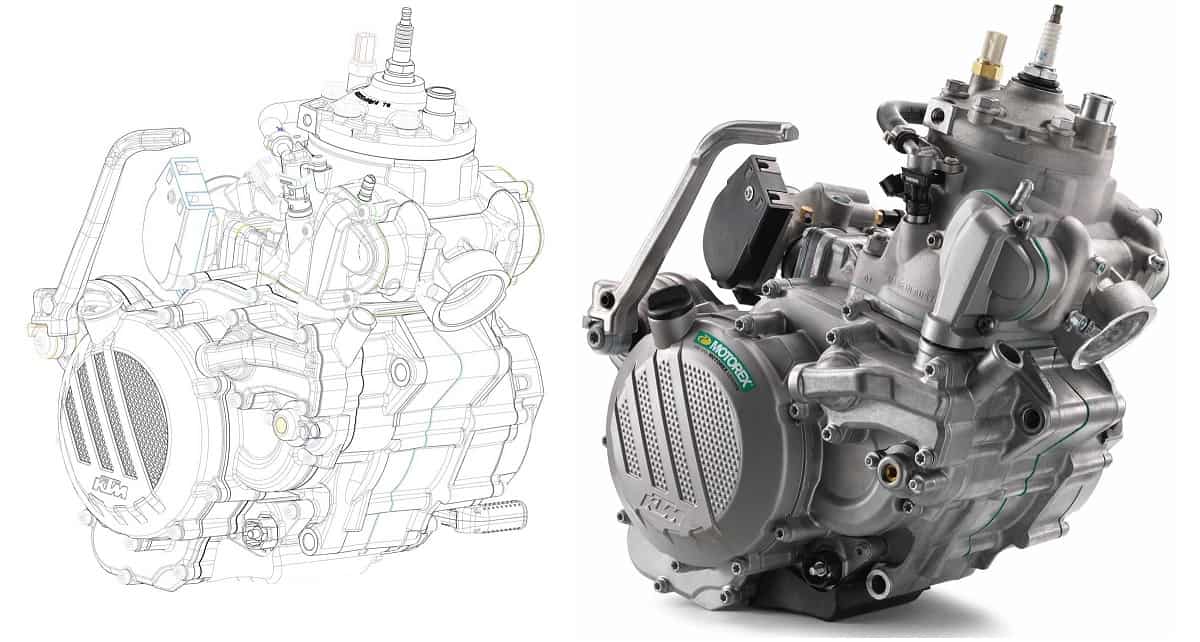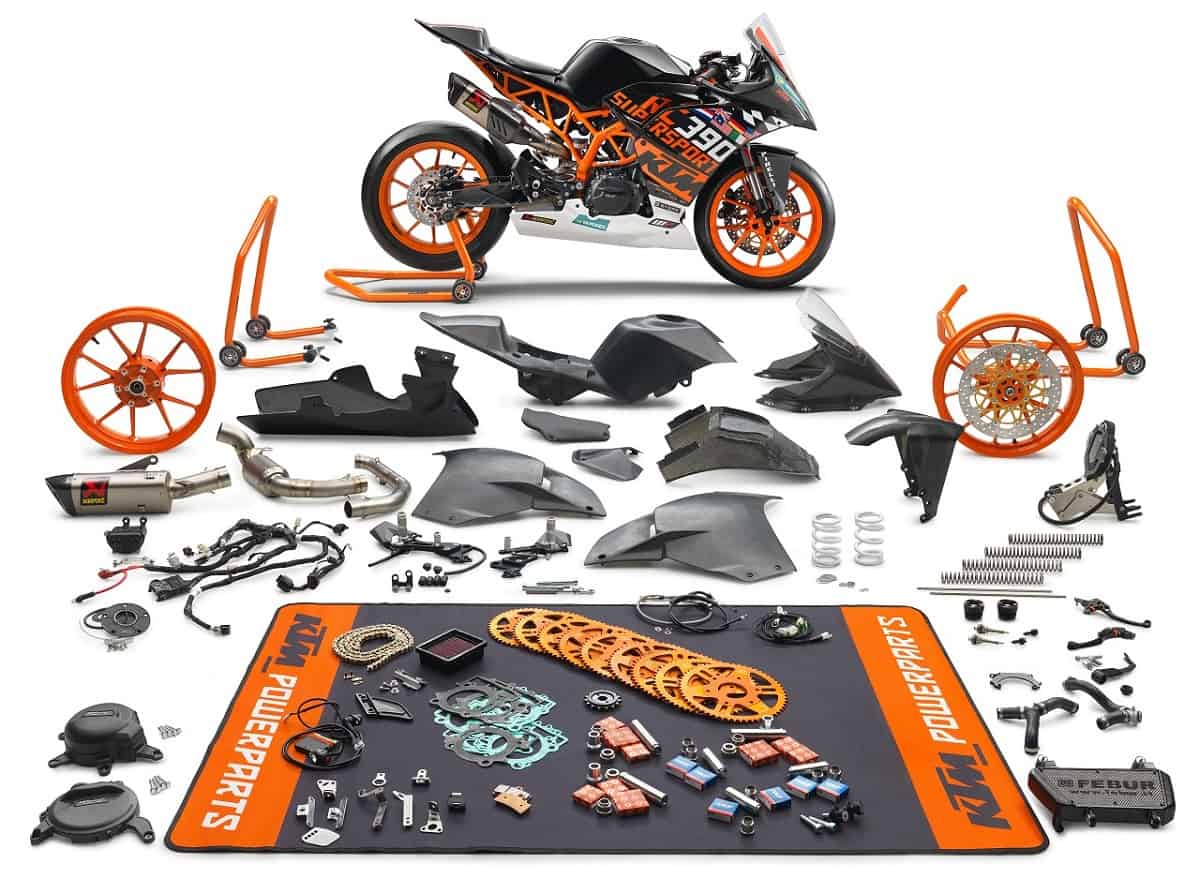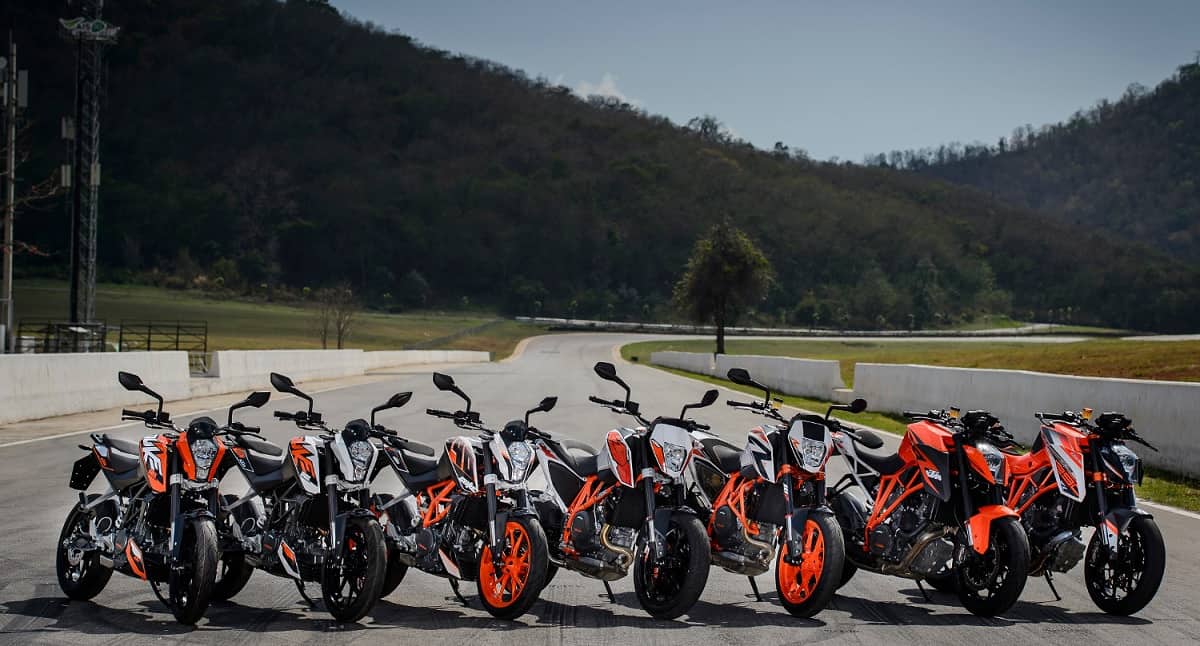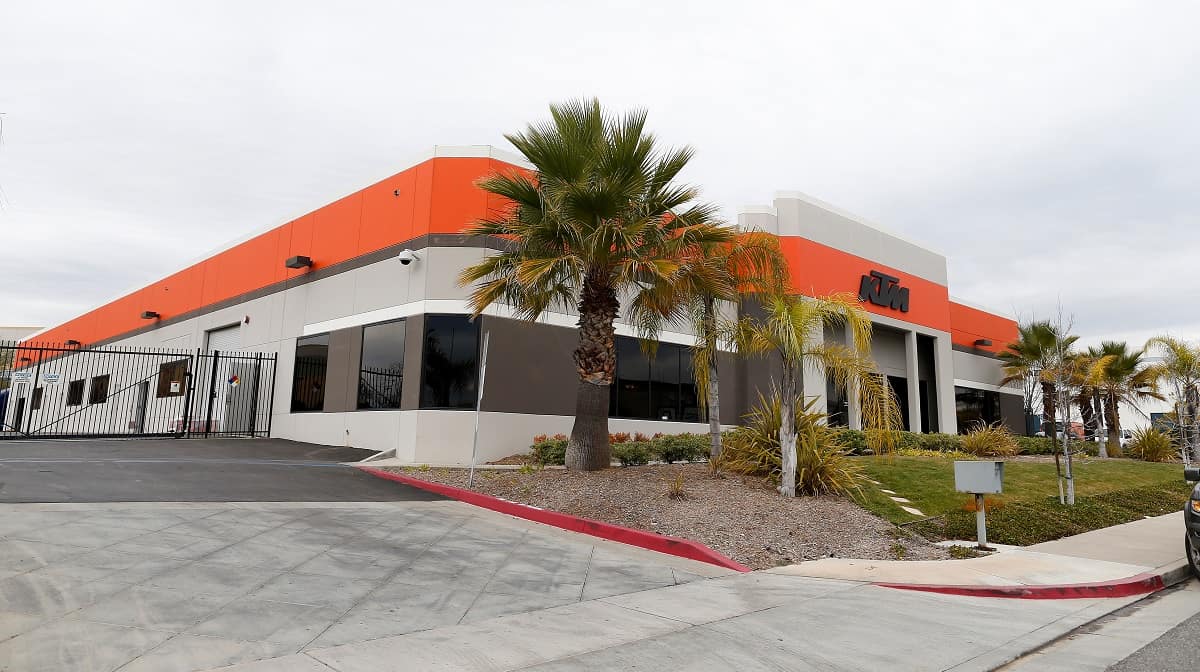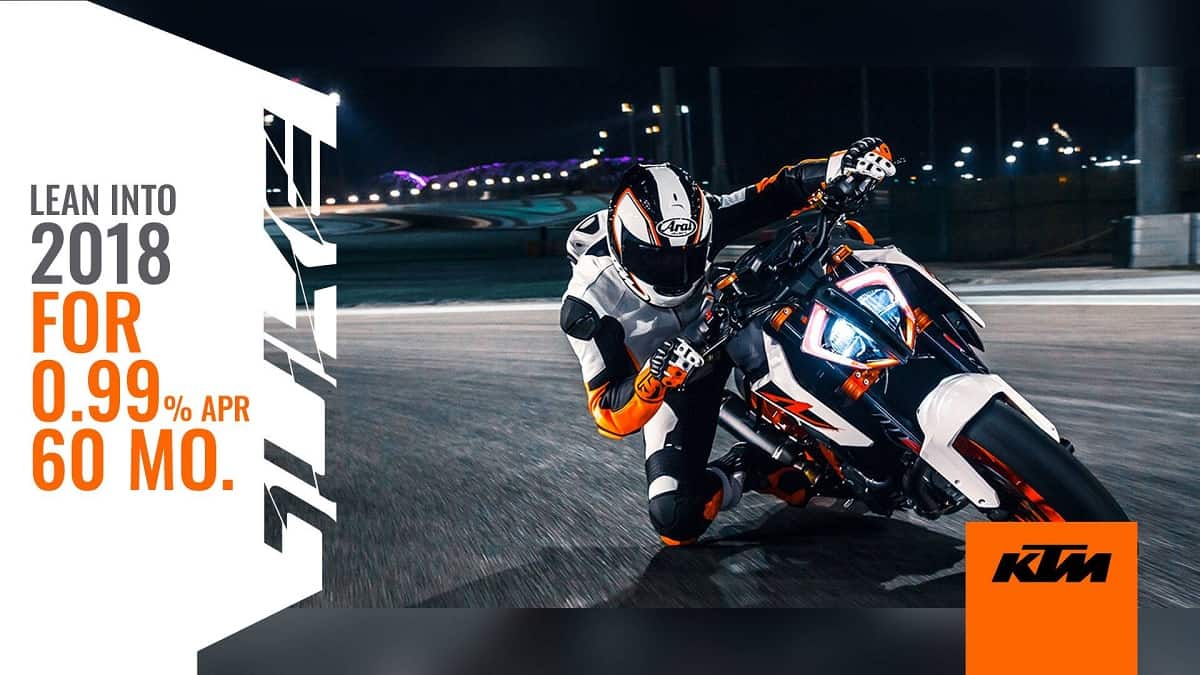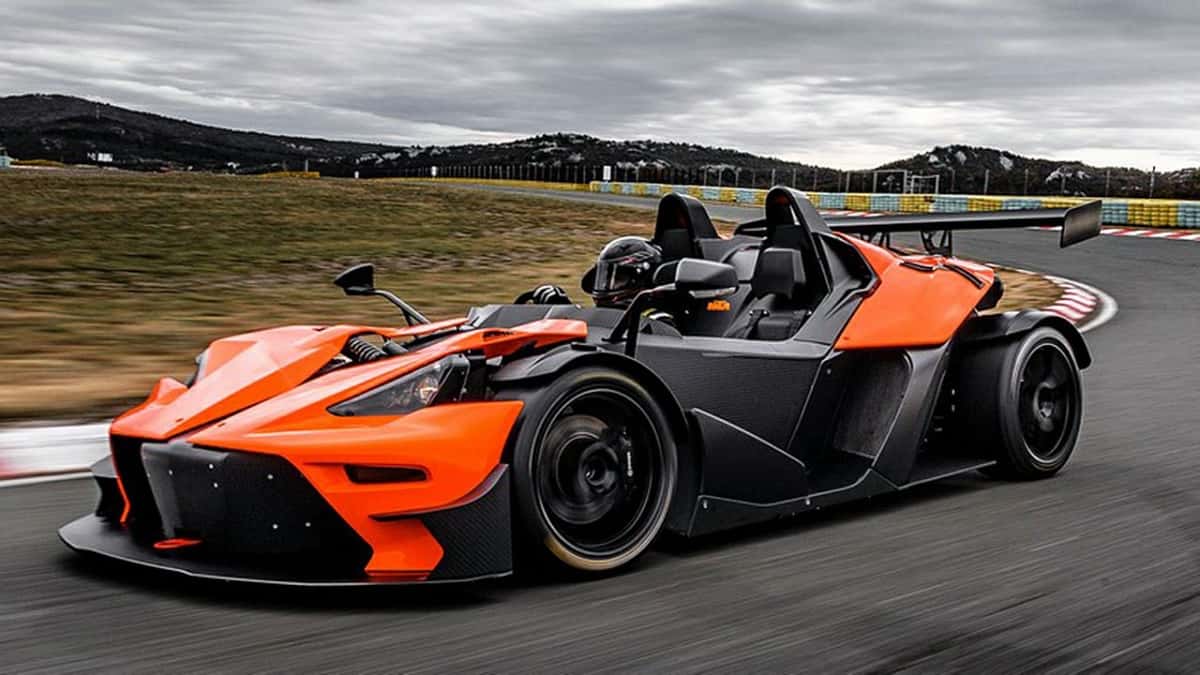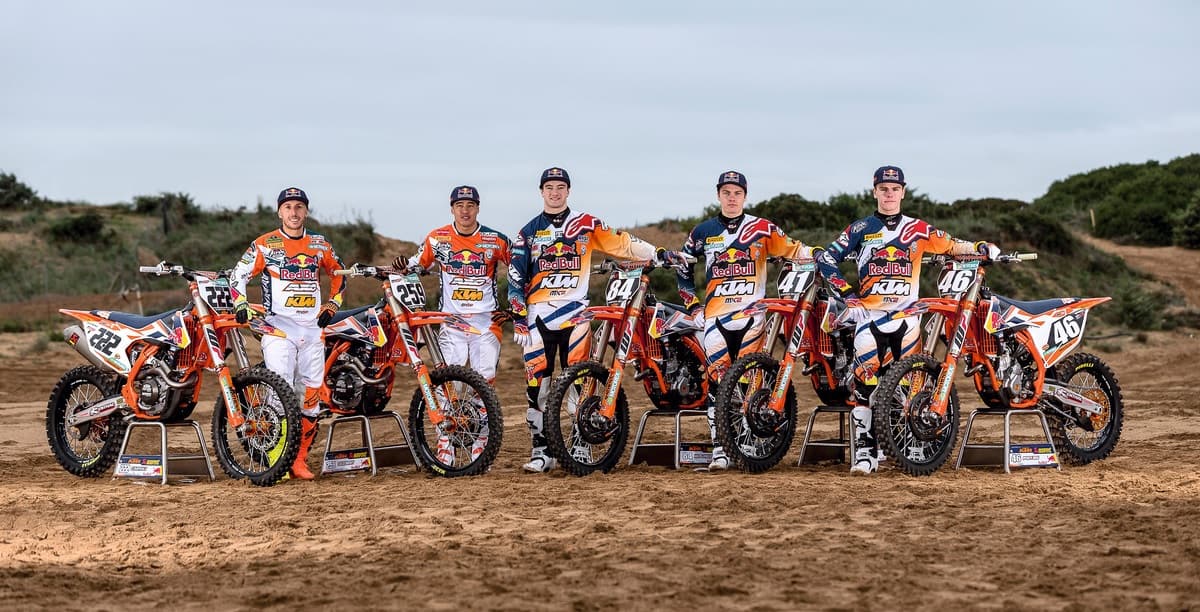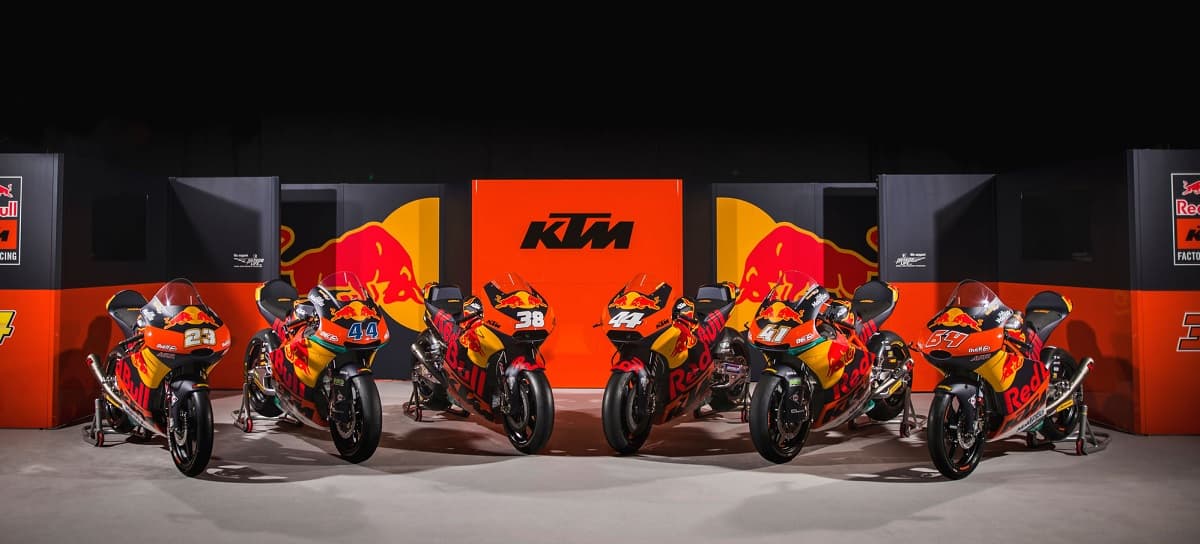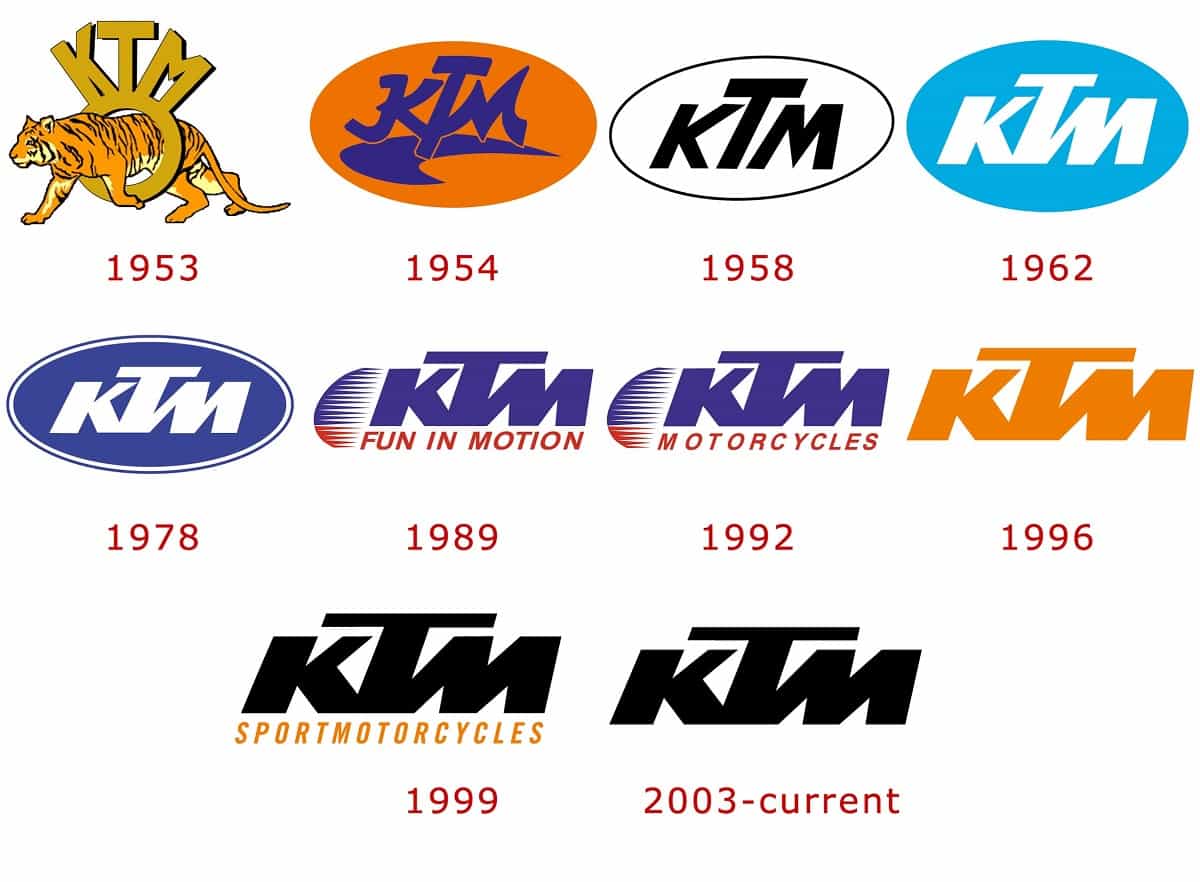Officially Europe’s largest motorcycle manufacturer and dubbed the fastest growing motorcycle manufacturer in the world, KTM is one of the most successful companies in the motorcycle industry. Officially, the current iteration of the Austrian firm was founded in 1992 but it can trace its roots all the way back to 1934. KTM made a name for itself for building some of the most reliable, robust, and advanced off-road motorcycles on the market, and it continuous that long and illustrious off-road tradition to this very day, however, the firm has also garnered a loyal following for its sophisticated on-road motorcycles too. Over the past few years, KTM has moved from strength to strength, selling record numbers of motorcycles and posting unprecedented profits, defying the current economic climate – and the secret to KTM’s success is the company’s willingness to adapt to any situation. No matter whether you prefer to ride off-road or on, KTM has a product for you. As the company’s tag line forcefully boasts: KTM is “Ready to Race.”
A Brief History Of KTM
Kraftfahrzeug Trunkenpolz Mattighofen
Modern KTM may have been formed in 1992 but the company can trace its roots all the way back to 1934. An Austrian engineer by the name of Johann (Hans) Trunkenpolz established a small car repair shop in Mattighofen, Austria. Three years later in 1937, Trunkenpolz began selling German made DKW motorcycles and Opel cars, trading under the unregistered name of Kraftfahrzeug Trunkenpolz Mattighofen. With the onset of World War II, the small repair shop and retailer thrived, with the vast majority of the business focusing on the sale and repair of diesel engines.
The end of the Second World War brought a time of financial uncertainty to the small Austrian firm, with the demand for engine repair falling and the cost of new automobiles rising. To help solve the company’s financial problems and find a solution to the growing demand for lightweight, economical transport options, Trunkenpolz decided to begin producing his own motorcycles. After years of research and development, the first prototype was unveiled in 1951. It was called the R100, and it featured all in-house manufactured components, apart from the engine which was a pull-start, 98cc single cylinder Rotax engine, made by Fichtel & Sachs.
Two years later, in 1953, the first ever Trunkenpolz motorcycle, the R100, went into full production. With 20 employees on the payroll, the Mattighofen “factory” was able to produce motorcycles at the rate of three units per day. The production of the R100 was a milestone for the small company, and opened a new chapter for the manufacturer.
Kronreif & Trunkenpolz Mattighofen
While the KTM moniker might have appeared to be an abbreviation of Kraftfahrzeug Trunkenpolz Mattighofen, it is in fact the abbreviation of Kronreif & Trunkenpolz Mattighofen instead. In 1953, the success of Trunkenpolz’s R100 attracted the interest of businessman and motorcycle enthusiast Ernst Kronreif, who was so delighted with the R100 that he became a large shareholder in the company, which ushered in the name-change to Kronreif & Trunkenpolz Mattighofen, or KTM as we know it today. With Kronreif’s backing, KTM were able to increase production, design new models, and get involved in prestigious racing championships. In 1954, KTM introduced two new models, the R125 Tourist, and the Grand Tourist, and began racing seriously. The 1954 Austrian 125cc National Championship title was won by KTM, and two years later the firm entered into the world famous International Six Days Trial even, with their rider Egon Dornauer taking the gold medal.
KTM was moving from strength to strength, introducing their first sports motorcycle, the Trophy 125cc, in 1957, and their first mopeds, the Ponny I, Ponny II, and Comet models shortly after, along with the start of bicycle production from their Mattighofen factory too. Unfortunately, Ernst Kronreif wasn’t able to see the success of his investment as he sadly passed away in 1960. Hans Trunkenpolz also wouldn’t survive to see the rise of his own brand as he died of a heart attack in 1962. The company was now managed by Erich Trunkenpolz, Hans’s son, who successfully managed to expand the company.
Under Erich’s leadership, the company grew to accommodate a workforce of more than 700 employees, working on the production of 42 different models. The 60s was an amazing time for the company, with their models competing in and winning tournaments all over the world. Naturally, the success of KTM’s models caught the eyes of many entrepreneurial characters, such as John Penton in the USA. Penton imported KTM motorcycles, starting with the GS, to the USA and began advertising their off-road prowess, attracting new buyers to the KTM name. By the end of the 70s, KTM would officially make a base in the USA, with a headquarters in Lorain, Ohio, and trading under the name KTM America Inc.
KTM’s new found success was also partly down to the fact that the company had begun developing and manufacturing its own engines and radiators. These KTM radiators were sold to numerous European car manufacturers and accounted for a large percentage of the Austrian company’s business. In 1980, KTM formally changed its name from Kronreif & Trunkenpolz Mattighofen to KTM Motor-Fahrzeugbau KG. With an annual turnover of approximately US$64 million, more than 700 employees, and booming international sales, KTM was stronger than ever. Unfortunately, it wasn’t to last.
Scooter and moped sales dropped tremendously, to the point that production was brought to a complete halt in 1988. A year later, Erich Trunkenpolz died, leading to a brief period of uncertainty that helped plunge KTM’s finance into complete disarray. An Austrian investment trust called GIT Trust Holding stepped in and bought a 51% share in the company but after numerous attempts to bring the company back on track, control was eventually turned over to an association of investment banks. It looked like the end of KTM was in sight.
The Pierer Generation
To help combat bankruptcy, KTM was split into four separate companies in 1992 KTM Sportmotorcycle GmbH (for motorcycles), KTM Fahrrad GmbH (for bicycles), KTM Kühler GmbH (radiator manufacturers), and KTM Werkzeugbau GmbH (KTM’s tooling division). The Sportmotorcycle division was bought by a subsidiary of Cross Industries called Cross Holding, along with other investors, who rebranded the venture KTM Motorradholding GmbH. Headed up by Cross Industries owner Stefan Pierer, KTM was about to embark on a path from utter failure to unprecedented success.
In 1992, KTM began operating again, and after the acquisition of KTM Werkzeugbau, the company finally began producing motorcycles once more. Under Pierer’s leadership, KTM could invest more time, money, and resources into research and development than ever before. These new and more advanced KTM motorcycles were successful enough to be showcased at competition racing, and KTM began to make a new name for itself in these racing events, securing sponsorships, winning races, and selling motorcycles. After a series of management restructurings, KTM unveiled a new model series, a line of motorcycles that would define the company for the years to come. In 1994, the road-ready KTM Duke finally arrived.
The success of the Duke series boosted KTM’s revenue so that by 1995 the firm was able to buy out Swedish motorcycle manufacturer Husaberg and take control of the Dutch suspension manufacturer White Power (WP) Suspension. Armed with Husaberg’s knowledge and their own WP-made suspension, KTM were moving from strength to strength, launching new off-road motorcycles, supermoto models, and a series of successful adventure-themed machines too. In fact, as the years rolled by KTM’s plans became more ambitious, and by 2007 the Austrian company launched something quite unusual: the KTM X-Bow sports car.
2007 didn’t just bring about an odd sports car concept, it also brought about Indian motorcycle manufacturer Bajaj Auto buying a 14.5% stake in KTM Power Sports AG, a stake that would evolve into a 47.97% share by 2013. With Bajaj’s backing, KTM then took a bold step in purchasing the Swedish motorcycle manufacturer Husqvarna Motorcycles from BMW Motorrad, and merged Husaberg and Husqvarna together. With more assets than ever before, KTM once again changed its name, this time from KTM Motorradholding GmbH to KTM AG. By 2015, KTM would have an annual turnover in excess of 1 billion Euro, employing more than 2500 workers, and would officially be recognized as the world’s fastest growing motorcycle manufacturer. If that wasn’t enough, Stefan Pierer’s KTM now owned most of KTM’s original assets that were split and divided in 1991: KTM Sportmotorcycle GmbH, KTM Werkzeugbau GmbH and KTM Kühler GmbH (today WP Radiators) were once again under one KTM banner.
Today, KTM is recognized as one of the most well-respected motorcycle manufacturers in the industry, consistently amazing riders and journalists the world over, cultivating a reputation for incredible reliability, unparalleled performance, and a drive for innovation. But how reliable are modern KTM motorcycles?
KTM Reliability
Unfortunately, KTM wasn’t featured in the most recent Consumer Reports study that ranks major motorcycle manufacturers on their self-assessed reliability index, so there’s not uniform measuring stick that we can use to measure KTM’s overall reliability. Instead of going off of purely anecdotal evidence from independent reviews, the only real ways to evaluate KTM’s reliability is through their deeds and the amount of recalls that have been issued in recent years.
Generally, KTM motorcycles are perceived as incredibly reliable products. Many riders come to this conclusion thanks to KTM’s long history competing in grueling off-road events that demand highly reliable engines that operate to high tolerances in rough conditions. True enough, KTM has consistently won the legendary Dakar Rally – a multi-stage, off-road rally raid, through some of the most brutal terrain on the planet – since 2001. Interestingly, this line of thinking is corroborated with KTM’s recall count from 2004 to 2018.
KTM Recalls
Since 2004, KTM has issued a total of 12 recalls in the United States. 12 is a remarkably low figure for such a major motorcycle manufacturer, considering that Ducati has issued a total of 49 since 2003, Yamaha a total of 35, and even Honda have issued 33 recalls in a similar time period. Of the 12 recall codes issued, the problems were fairly minor and only affected a small number of units. For example, the most significant KTM recall involved 5,812 models from the Super Adventure and Adventure R lines and concerned faulty wiring that could fray and melt a brake line in the worst case scenario. The next largest involved 2,684 models from KTM’s 950 series of motorcycles thanks to a faulty rear brake system that gave the rear brake a soft or spongy feel. The third most significant recall since 2004 affected 2,361 KTM Super Duke models but this was down to a faulty Brembo master cylinder, which affected models from a wide range of manufacturers. In the grand scheme of things, these recalls aren’t that large or disastrous in nature. In any case, KTM was able to take responsibility for their errors, and repair and replace all affected motorcycles.
KTM Technologies
While KTM may be most famous for its simple yet reliable single cylinder engines found on their championship winning dirt bike motorcycles, the company actually boasts some of the most radical technology, and has a keen interest in research and development. Simple, rough and ready engines might be KTM’s bread and butter but there’s more to the Austrian firms that tough off-roaders. To prove this, KTM established “KTM Technologies” – a partnership of KTM Sportmotorcycle, KTM Sportcar, and Kiska design studio – was established to streamline KTM’s research and design ambitions, taking an idea from conception to prototyping as quickly as possible. This fast approach has led to some of the most interesting technological advances in motorcycling history. In fact, one of KTM’s most recent innovations might very well change the landscape of modern off-road motorcycling – and street riding too.
Fuel Injected Two-Stroke Engine Technology
One of KTM’s most promising new technologies is their radical fuel injection system for two-stroke engines. Replacing conventional carburetors with KTM’s new Transfer Port Injection system could bring about a revival of two-stroke motorcycles. Two-strokes fell out of favor thanks to strict emissions rules, and despite the performance output of the engines, the unnecessary fuel and oil wastage, and the pollution they emitted forced many manufacturers to turn their backs on the engine configuration. Except KTM, of course. Instead, KTM have come up with a revolutionary new method that squirts fuel directly into the cylinder’s transfer ports, reducing fuel consumption, eliminating the need for pre-mixed fuel, and cutting emissions down by a significant percentage.
Fuel injected two-stroke technology isn’t that new, however, KTM’s system is the first ever system to go into mainstream production. Using a new throttle body and a sophisticated electronic control unit, KTM’s TPI powered two-strokes might be the most advanced dirt bikes on the market, and with time, that very same technology may be made available for street bikes.
Race Developed Motorcycles
If KTM can usher in a two-stroke renaissance, then the future of motorcycle racing could lead in an entirely new and unexpected direction. Luckily for KTM, they’re masters at building both two-stroke and four-stroke competition winners. The secret to KTM’s sales success is the fact that the company is fast at implementing successful race-developed technologies onto their consumer-level production bikes. The KTM 450 Dakar machine is the perfect example of this. Built for tough competition use, KTM has brought a number of race-developed features to the everyday rider, drastically improving performance and ride experience.
The latest 450 Dakar, for example, benefited from superior handling, more practical ergonomics, and a higher top speed. To achieve this, KTM optimized the 450 Dakar’s center of gravity by repositioning the gas tank and pairing the new arrangement with slimmer bodywork. The result was improved handling and better control. The new bodywork was the complimented with a new, aerodynamic windscreen with an integrated air intake. The combination of these features resulted in a higher power output from the motor, and less stress on the rider. Finally, KTM also re-arranged certain features, such as the 450 Dakar’s navigation-tower style dash, and replaced parts with lightweight alternatives where possible. All of these features, designed and engineered for professional racing, became standard on KTM’s road-going alternatives too.
The KTM X-Bow
KTM have interests outside of the two-wheeled segment too, and the KTM X-Bow is the greatest example of that. Originally the X-Bow was a design study that had the intention of designing a “spartanic, light-sports car, pared down to the essentials,” that came complete with “as many technological innovations as possible,” according to CEO Stefan Pierer. And it delivered.
The KTM X-Bow is a two-seater sports car that comes powered by a 250 (plus) horsepower Audi engine, built around a monocoque frame constructed from carbon-fiber reinforced plastics, to offer the best power to weight ratio without compromising torsional stiffness. It comes complete with a whole host of specially designed composite parts, and packed full of innovative technology. If that wasn’t enough, KTM have gone through the painstaking process of making it road legal in many parts of the world, and have put the X-Bow into production. The company originally intended to produce around 500 units per year, but demand was so high that they were forced to increase production to roughly 1000 units per year instead!
KTM’s Future Projects
The most interesting of KTM’s technological advances aren’t yet available to the public. While KTM’s R&D department has a number of exciting projects in the pipeline, we’re most anticipating their new “adaptive cruise control” and “blind spot detection” technologies. The adaptive cruise control setting works like conventional cruise control, however t uses sensors to track the vehicle in front and adapt to its speed within certain programmable parameters. Using the application of throttle and brake, KTM’s adaptive cruise control could take the strain off of long-distance rides, reducing rider fatigue.
Another clever idea from KTM’s R&D department focuses on blind spot detection. When looking in your mirrors, inevitable blind spots form. However, by using a series of sensors and LED lights mounted within the mirror, KTM’s new blind spot detection system would send a signal to the mirror-mounted LEDs, flashing them to let you know when a hazard that you may have missed is approaching. This clever feature could save plenty of lives in the near future.
KTM E3W
Talking of the future, KTM, like most manufacturers, have an interest in developing new forms of sustainable transport systems. One of the most exciting projects to emerge from KTM Technologies is their experimental, emission-free, lightweight three-wheeler: the KTM E3W. Essentially, the E3W is a small, compact two-seat, three-wheeler machine that champions emission-free propulsion, an efficient driving experience, and easily recyclable technologies. While the EC3 was only a design study, it proves that KTM has bold plans for the future.
Popular KTM Motorcycles
KTM manufactures a wide range of motorcycles to satisfy an ever-widening fan base. While KTM may have made a name for themselves as high-quality dirt-bike manufacturers, they have managed to cultivate another identity over the past twenty years, an identity firmly rooted in street riding. KTM now caters for road riders as well as dirt-bikers, with a range of motorcycles that offer the best of both worlds too. Here’s a quick overview of KTM’s current line-up.
KTM Dirt Bikes
Motocross – KTM’s “SX” motocross models come in two styles. They offer models powered by single-cylinder two-stroke engines that come in the following displacements: 50, 65, 85, 105, 125, and 250 cc. And they offer single-cylinder four-stroke models that come in 250, 350, and 450cc versions.
Cross-Country – The Cross-country offerings are given the model designation “XC.” Again, they come in both two-stroke and four-stroke styles, with the two-stroke’s offered in 150, 250, and 350cc, and the four-stroke models in 250, 350, and 450cc. Smaller XC models are available, but they are for competition only and aren’t easy to procure.
Enduro – Unlike KTM’s Motocross and Cross-country models, the “EXC” styled Enduro line is completely street-legal. They’re similar in nature to the Cross-country bikes, except they have license plates holders, lights, and all the street-legal necessities. The main difference is the addition of a wider-ratio gearbox, and plusher non-linkage suspension. The EXC line up is only available in four-stroke, and in 250, 350, 450, and 500cc. The 690cc KTM Enduro R is technically an EXC model, but it’s a dual-sort motorcycle rather than an out-and-out dirt bike.
Free Ride – KTM’s Free Ride models are in a class of their own: neither enduro nor trials, but a fusion of the two. The Freeride comes in three distinct flavors. The first is the 250R, which borrows the same engine from the enduro EXC 250. The second is a larger 350cc model that borrows the same four-stroke 350 engine from the EXC 350. Finally, there’s the Freeride E models, which are currently only available in Europe. These are all-electric single speed models, in motorcross, cross-country, and supermoto variants.
KTM Street Bikes
Ever since KTM released their first street bike – the Duke 620 – in 1994, they have been continuously refining and producing their on-road ride experience, and expanding their range to accommodate a wide range of riders from sports riders to long-distance adventure enthusiasts. Here’s a snapshot of the current KTM line-up.
Supermoto – KTM prides itself on being the first manufacturer to offer a complete, competition-spec supermoto model to the general public. Despite the success of their supermoto products, KTM stopped supermoto production in 2016. However, KTM are currently developing a new series of supermoto inspired machines, with at least one model equipped with a 690cc engine.
Naked – KTM offers five motorcycles in the naked class, three from the Duke family, and one from the larger capacity Super Duke line. The KTM Duke is offered in 390cc, 690cc, and 790cc configurations, based around a single-cylinder four-stroke LC4 engine. The top of the range 1290 R Super Duke R is powered by a twin-cylinder LC8 engine instead.
Other Duke models are available in other regions. The 125cc, 200cc, and 250cc versions aren’t currently imported to the United States. All Dukes with an engine size of 390cc or smaller are manufactured at the Bajaj Auto plant in Pune, India, rather than in Austria.
Adventure – KTM currently has two class-leading adventure touring motorcycles on the roster: the 1090 Adventure and 1290 Super Adventure. These dual-sport adventure machines come with variable seat heights, with different wheel and suspension options that deliver better performance in one of three categories: road riding off-road riding, or touring. Both the Adventure and Super Adventure come equipped with two-cylinder LC8 engines, slipper clutches, electronic riding modes, and advanced LCD displays.
Sports Tourer – Currently KTM only offers one sports tourer motorcycle, and that’s the KTM 1290 Super Duke GT (Gran Turismo). The Super Duke GT is built on top of the Super Duke R platform and has been modified for better touring comfort. Notably, the frame is longer, the handlebars offer better riding comfort, the fuel tank is larger to support more fuel, and the engine comes with a different tune.
Sports – KTM currently only offers small capacity sport bikes. KTM’s sport machines are given the “RC” designation, and the RC125 and RC390 have been praised the world over for their performance, style, and charisma. KTM produced the more powerful 1190 RC8 sport bike between 2008 and 2015, but the company ceased production and retired from superbike manufacture. However, KTM has recently debuted in the MotoGP World Championship, fielding their RC-brand of prototype racers, which hopefully signals a return to production superbikes in the near future.
KTM In The USA
Though KTM can trace its roots all the way back to 1934, the company is relatively new in the USA. The first US subsidiary, KTM North America Inc, wasn’t established until 1978. Originally based out of Lorain, Ohio, KTM first came to America working with veteran motorcycle racer John Penton. At first, KTM’s motorcycles weren’t a sales success, and it took some design direction from Penton before KTM started producing motorcycles that satisfied American riders. Over the years, KTM’s North American subsidy has steadily grown larger and larger, until the expansion overwhelmed the Lorain base, calling for new premises.
In 1999, KTM North America moved a little ways out of Lorain, to Milan Avenue, Amherst. In 1999, the company employed 25 workers, a figure that has more than tripled between then and now. Today, KTM North America is the headquarters for more than 400 dealerships in the USA, and a little over 60 in Canada, with staff that co-ordinate the mammoth task of importing and distributing motorcycles, parts, clothing, and accessories.
Is KTM American?
KTM North America Inc certainly is American, but the products that they sell are not. Currently, KTM does not manufacture any motorcycle on American soil. KTM motorcycles are manufactured in Mattighofen, Austria, or in Pune, India, and shipped to Norfolk, Virginia. From Norfolk, the motorcycles are distributed directly to local dealerships.
KTM Dealers
KTM has 439 authorized dealerships in the United States, and they specialize in the sale and service of KTM’s off-road and street motorcycles, sell items from KTM’s extensive parts and merchandise catalog, and provide support for KTM riders across North America. Despite KTM’s extensive dealership network, championship winning products, and history of reliability, a mystery shopper survey conducted by Pied Piper ranked KTM and Husqvarna’s dealerships as some of the worst in the USA.
The Pied Piper Dealership Survey
In 2017, mystery shopper sleuths from Pied Piper conducted an independent study that assessed motorcycle dealerships across the USA. The study focused on the major motorcycle manufacturers and ranked sales and service staff at different dealerships. The Prospect Satisfaction Index scored dealerships and formulated a ranking system. Unfortunately, KTM came 16th out of 17 manufacturers – with Husqvarna coming in last place. The study found that BMW Motorrad, Harley-Davidson, and Ducati offered the best customer services, in first, second, and third places respectively. The study found that KTM’s dealership staff were among the least likely to promote the benefits of buying their products, least likely to ask for the sale, and least likely to ask for customer’s contact information. However, KTM’s low-score is likely down to the small amount of dealerships, and the fact that the KTM brand is expanding faster than most dealers can cope. And of course, the only way is up for these dealerships.
KTM Financing
Like most of the major motorcycle manufacturers, KTM offers a wide range of financing packages for prospective customers. KTM buyers looking to take advantage of the best financing deals will have to qualify with either FreedomRoad Financial or Synchrony Financial. Unlike most of the major manufacturers who operate their own in-house financing institutions, KTM outsources most of its financial and credit deals to an external company. Customers who qualify through either FreedomRoad or Synchrony’s programs can access special financing rates, such as 0.99% APR (Annual Percentage Rates) on select models, or a combination of low APR rates and low monthly payments on new and unregistered KTM models from certain model years. These special APR rates start from as low as 0.99% for 60 months on certain models.
KTM also offer competitive incentives on their own brand of Power Parts and Power Wear accessories. For example, customers can enjoy the benefits of KTM’s aggressive retail financing program as mentioned above whilst also taking advantage of interesting in-store credit options when purchasing certain models. The in-store credit options can be used in tandem with other KTM deals, including their attractive Standard Financing rate – which offers 5.25% APR Standard Financing on certain model year motorcycles for 60 months for qualifying customers – and other offers. The best way to learn about KTM’s current financing options it to contact your local dealership for the most up to date information.
KTM Business Subsidiaries
KTM AG is more than just a motorcycle manufacturer, and as of 2018 the firm currently has numerous subsidiaries underneath the KTM AG umbrella. The most obvious ones include KTM-Racing AG, which is the Swiss division of KTM; KTM-Sportmotorcycle India Private Ltd, which concerns KTM’s Indian operations; KTM Sportmotorcycle Gmbh, which focuses on the distribution of motorcycles and parts; and KTM Sportcar GmbH, which oversees the production and distribution of the KTM X-Bow lightweight sports car. But what about the others?
Husqvarna Motorcycles GmbH
In 2013, the KTM Group successfully managed to acquire the Swedish motorcycle manufacturer Husqvarna Motorcycles in a deal with BMW Motorrad. KTM has managed to revive Husqvarna, and though the Husqvarna brand operates relatively autonomously from KTM, the two companies share many parts and features, including engines, suspension, and design language.
KTM Technologies GmbH
The KTM Group has a 74% stake in KTM Technologies GmbH, a company that was established to serve the research, development, and creative needs of the wider KTM brand. In short, KTM Technologies serves as KTM’s R&D department, prototyping, and test center.
KTM Immobilien GmbH
Though smaller and more obscure, KTM Immobilien GmbH is an important part of the KTM Group. KTM Immobilien is the owner of all of KTM’s properties and buildings, and manages KTM’s real-estate assets.
WP AG
The KTM Group also holds the controlling share in WP AG, formerly known as White Power Suspension GmbH – a Dutch manufacturer of motorcycle suspension. WP supplies all of KTM and Husqvarna’s motorcycles with their suspension systems.
Kiska GmbH
Kiska GmbH is a design company that KTM has the controlling share in. KTM and Kiska have worked together for a long time, with Kiska being responsible for the signature KTM design aesthetic that the bikes are famous for. Similarly, Kiska also heads up the design of Husqvarna’s motorcycles, and a number of KTM’s other projects.
Global Divisions
On top of the above mentioned companies, the KTM Group also operate the overseas regional companies that sell and distribute KTM and Husqvarna motorcycles worldwide. The KTM Group operates 20 regional divisions in Europe (KTM: 14, Husqvarna: 6), 5 in North and South America (KTM: 4, Husqvarna: 1), and 7 in the rest of the world (KTM: 6, Husqvarna: 1).
KTM Racing
KTM’s racing lineage is firmly rooted in off-road pursuits such as motocross racing, supercross racing, and cross country rallies. In fact, KTM’s first world championship win was in 1974, when Guennady Moisseev won the 250cc Motocross World Championship. Between then and now, KTM has won more than 260 world championship titles in a variety of events, including the MXGP, MX1, and MX2 to name a few, making KTM one of the most successful motorsports manufacturers in history. KTM has also won a number of titles in the Supercross World Championship, courtesy of motorcycling legend Ryan Dungey; back to back wins at the Dakar Rally between 2001 to today; 15 titles in the FIM Cross-Country Rallies World Championship; and has a strong presence in the Women’s MX, Atlas Rally, Rallye du Maroc, and many, many more events.
KTM has also competed in a number of road racing events, such as the IDM, the Superbike INernational German Championships and enjoyed mild success. It was once rumored that KTM would also field a team in the World Superbike Championships (WSBK) but since the company has ceased production of their RC8 sport bike, and currently offers no other alternatives that could satisfy the WSBK’s strict homologation rules, any chance of KTM competing in the WSBK seems unlikely in the near future.
KTM In MotoGP
KTM first began fielding entrants into the 125cc MotoGP (races in 2003. Between 2003 and 2009, KTM managed to regularly finish well, scoring second and third places overall in 2005, a second place finish in 2006, and third again in 2007. In the 250cc MotoGP, KTM managed to achieve a third place finish in 2008. KTM withdrew from the Grand Prix before returning in 2012. Eventually, the Grand Prix series would re-shuffle the events, renaming the 125cc championship to “Moto3” and 250cc championship to “Moto2.” In 2012, KTM won the Moto3 Constructor’s Championship, and won again in 2013, 2014 and once more in 2016, when they also won the Rider’s Championship too. KTM has also returned to the Moto2 but to mixed results.
In 2017, KTM made its first leap into the premier class of motorcycle racing. As a rookie team, KTM had no illusions about winning podiums or races in their debut seasons. However, the KTM team has made steady and impressive progress between their debut and the present day. In fact, KTM has made a deal with Yamaha’s former satellite team, Tech 3, and will support two more motorcycles on the grid, bringing the number of KTM motorcycles competing in the MotoGP to four – which is incredible progress considering that the factory team is only relatively new, too.
The KTM Museum
KTM enthusiasts making the pilgrimage to Mattighofen in Austria can look forward to embarking on a factory tour and an exciting experience at KTM’s Motorhall interactive museum – when it officially opens. Construction of KTM’s visitor center is expected to end in the winter of 2018 with the official opening touted for Spring 2019. At the moment, details about the Mattighofen KTM Motorhall are few and far between, however, we do know that it will be operate from Tuesday to Sunday, between the hours of 9am and 6pm, with tickets costing 10 Euro per adult, and children under the age of 14 receiving free entry. Each ticket will contain a shop voucher that can be redeemed at the gift shop.
The Motorhall itself is expected to house a wide range of exhibits, capturing the history of KTM, the company’s future plans, KTM’s design work, and showcase employee talent. It has also been reported that the Motorhall will offer numerous “hands on” experiences, allowing guests to get involved and tinker with real motorcycles, with a hope that the experience could ignite a passion in youths and new riders to get involved in the motorcycle industry. While details are few, another report has also mentioned that life-long KTM enthusiasts can get in touch with KTM and submit stories and articles that could be featured in the museum.
The KTM Factory Tour is currently available by request, and KTM enthusiasts looking to get up close and personal with KTM’s manufacturing process can enjoy an in-depth, behind-the-scenes look at how Europe’s largest motorcycle manufacturer operates. For more information, send an email to KTM expressing your interest at [email protected]
5 Facts You Probably Didn’t Know About KTM
#01. KTM’s CEO Stefan Pierer was once asked which KTM motorcycle he liked the best, and despite having a longstanding passion for off-road riding, the CEO’s answer was quite surprising. His choice was the 1290 Super Duke R. Here’s what he said during an interview for KTM’s online blog: “It would have to be the 1290 Super Duke R. It is the styling and the performance of the bike. It is one of the top bikes we have seen over the last twenty-five years. I think it defined a new segment within Naked Bikes and I think customers are so proud to have it.”
#02. KTM is one of the most successful brands in motorsports history. In the motocross department, KTM won its first championship in 1974, and has won more than 60 world championship titles across a range of events ever since. It’s no wonder that many off-road enthusiasts favor KTM machinery over other manufacturers.
#03. KTM’s legendary “Duke” owes its name to Geoff Duke, the acclaimed British motorcycle racer who was borderline unbeatable on track throughout the 1950s. Though Duke was famous for riding single-cylinder Norton machines, his name lodged in the mind of the unnamed-motorcycle’s project manager, Wolfgang Felber. Felber suggested the name because of Geoff Duke’s racing heritage, but the KTM executives responsible for choosing a name liked it because of its association with nobility instead. Either way, the KTM Duke owes its name to Geoff Duke, whether it was named after him or not.
#04. KTM might be famous for making motorcycles and racing gear, but did you know that they also make espresso coffee machines too? Yep, KTM have genuinely built a branded KTM espresso maker in the past. You can enjoy your coffee with a slice of toast from an official KTM branded toaster too, if you like, which burns the KTM logo onto every slice… No garage should be considered complete without either of these unusual products.
#05. The Lotus C-01 motorcycle designed by Daniel Simon is actually powered by KTM’s four-stroke, 75-degree, V-twin RC8 engine. Originally, the Lotus C-01 was only a concept, but thanks to the efforts of Germany’s Kodewa GmbH (now known as ByKolles Racing) the Lotus C-01 is now available for purchase, if you can afford it.
KTM Motorcycles FAQ
#01. Who Owns KTM? KTM AG is actually owned by self-made Austrian billionaire Stefan Pierer of Pierer Konzerngesellschaft mbH. KTM is a subsidiary of CROSS KraftFahrZeug Holding GmbH, which in turn is a subsidiary of Pierer Konzerngesellschaft mbH. In short: KTM’s is owned by Stefan Pierer.
#02. Does KTM Own Husqvarna? Yes. In 2013, KTM was successfully able to purchase Husqvarna Motorcycles from BMW Motorrad AG. KTM quickly merged Husqvarna with their other subsidiary, Husaberg, and worked with design studio Kiska to help re-launch the Husqvarna brand.
#03. Where Are KTM Motorcycles From? KTM is an Austrian motorcycle manufacturer that designs, manufactures, and sells motorcycles out of its company base in Mattighofen, Austria. Though the company is Austrian, a sizeable portion of the firm is owned by India’s Bajaj Auto, and many of the company’s small displacement street bikes are manufactured overseas.
#04. Where Are KTM Motorcycles Made? KTM has numerous manufacturing plants, though the vast majority of its range is manufactured at the company’s base in Mattighofen, Austria. KTM’s small displacement street models are manufactured in Pune, India and in the Philippines.
#05. Does KTM Still Make ATVs? No, they do not. KTM began a formal partnership with ATV manufacturer Polaris Industries in 2005 to work together developing ATVs. That partnership was reduced in 2006, with KTM purely supplying engines to Polaris instead.
#06. What Does KTM Stand For? KTM stands for Kronreif – Trunkenpolz – Mattighofen, referencing the two founder’s surnames and the location of their headquarters. However, prior to that, KTM also stood for Kraftfahrzeug Trunkenpolz Mattighofen. Both answers are correct, but Kronreif-Trunkenpolz-Mattighofen is the more accepted answer.



